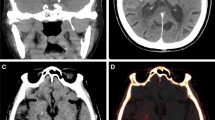Abstract
The finding of active hemorrhage on computed tomography (CT) in trauma patients has been shown to have significant clinical implications and has been incorporated into numerous CT grading schema. As CT technology has advanced, the sensitivity for detection of active hemorrhage in the trauma population has significantly improved. Currently, with the improved spatial and temporal resolution afforded by 64 multidetector computed tomography (64 MDCT) technology, the clinical implications of the CT findings of active extravasation may need to be reconsidered. This article illustrates the various imaging manifestations of active extravasation throughout the body using 64 MDCT. Additionally, protocol issues specific to the findings of active hemorrhage using 64 MDCT are detailed, including novel interpretation techniques, which offer aid in detecting and characterizing hemorrhage. Finally, the clinical implication of active extravasation using this new technology is discussed. Although more sensitive to the detection of small hemorrhagic foci and with clinical implications highly dependent upon location, active bleeding remains as a salient finding that affects subsequent clinical management of trauma patients.











Similar content being viewed by others
References
Hyare H, Desigan S, Nicholl H, Guiney MJ, Brookes JA, Lees WR (2006) Multi-section CT angiography compared with digital subtraction angiography in diagnosing major arterial hemorrhage in inflammatory pancreatic disease. Eur J Radiol 59:295–300
Roy-Choudhury SH, Gallacher D, Rankin S, Woodburn P, Steers J, Adam AN (2005) Multislice CT (MSCT) versus digital subtraction angiography (DSA): sensitivity and lower limit of detection of active bleeding in a Phantom. RSNA, Oak Brook, IL
Fang JF, Wong YC, Lin BC, Hsu YP, Chen MF (2006) The CT risk factors for the need of operative treatment in initially hemodynamically stable patients after blunt hepatic trauma. J Trauma 61:547–553; discussion 553–554
Thompson BE, Munera F, Cohn SM, MacLean AA, Cameron J, Rivas L, Bajayo D (2006) Novel computed tomography scan scoring system predicts the need for intervention after splenic injury. J Trauma 60:1083–1086
Rhodes CA, Dinan D, Jafri SZ, Howells G, McCarroll K (2005) Clinical outcome of active extravasation in splenic trauma. Emerg Radiol 11:348–352
Sivit CJ, Peclet MH, Taylor GA (1989) Life-threatening intraperitoneal bleeding: demonstration with CT. Radiology 171:430
Jeffrey Jr RB, Cardoza JD, Olcott EW (1991) Detection of active intraabdominal arterial hemorrhage: value of dynamic contrast-enhanced CT. AJR Am J Roentgenol 156:725–729
Taylor GA, Kaufman RA, Sivit CJ (1994) Active hemorrhage in children after thoracoabdominal trauma: clinical and CT features. AJR Am J Roentgenol 162:401–404
Willmann JK, Roos JE, Platz A, Pfammatter T, Hilfiker PR, Marincek B, Weishaupt D (2002) Multidetector CT: detection of active hemorrhage in patients with blunt abdominal trauma. AJR Am J Roentgenol 179:437–444
Yoon W, Jeong YY, Shin SS, Lim HS, Song SG, Jang NG, Kim JK, Kang HK (2006) Acute massive gastrointestinal bleeding: detection and localization with arterial phase multi-detector row helical CT. Radiology 239:160–167
Anderson SW, Soto JA, Lucey BC, Burke PA, Hirsch EF, Rhea JT (2007) Feasibility and clinical utility of pelvic CT angiography in blunt trauma using 64 MDCT. Radiology (in press)
Reed AB, Thompson JK, Crafton CJ, Delvecchio C, Giglia JS (2006) Timing of endovascular repair of blunt traumatic thoracic aortic transections. J Vasc Surg 43:684–688
Ng CJ, Chen JC, Wang LJ, Chiu TF, Chu PH, Lee WH, Wong YC (2006) Diagnostic value of the helical CT scan for traumatic aortic injury: correlation with mortality and early rupture. J Emerg Med 30:277–282
Anderson SW, Varghese JC, Lucey BC, Burke PA, Hirsch EF, Soto JA (2007) Blunt splenic trauma: delayed-phase CT for differentiation of active hemorrhage from contained vascular injury in patients. Radiology 243:88–95
MacLean AA, Durso A, Cohn SM, Cameron J, Munera F (2005) A clinically relevant liver injury grading system by CT, preliminary report. Emerg Radiol 12:34–37
Lane MJ, Katz DS, Shah RA, Rubin GD, Jeffrey RB Jr (1998) Active arterial contrast extravasation on helical CT of the abdomen, pelvis, and chest. AJR Am J Roentgenol 171:679–685
Sofocleous CT, Hinrichs CR, Hubbi B, Doddakashi S, Bahramipour P, Schubert J (2005) Embolization of isolated lumbar artery injuries in trauma patients. Cardiovasc Intervent Radiol 28:730–755
Netto FA, Tien H, Hamilton P, Rizoli SB, Chu P, Maggisano R, Brenneman F, Tremblay LN (2006) Diagnosis and outcome of blunt caval injuries in the modern trauma center. J Trauma 61:1053–1057
Scaglione M, de Lutio di Castelguidone E, Scialpi M, Merola S, Diettrich AI, Lombardo P, Romano L, Grassi R (2004) Blunt trauma to the gastrointestinal tract and mesentery: is there a role for helical CT in the decision-making process? Eur J Radiol 50:67–73
Yoon W, Kim JK, Jeong YY, Seo JJ, Park JG, Kang HK (2004) Pelvic arterial hemorrhage in patients with pelvic fractures: detection with contrast-enhanced CT. Radiographics 24:1591–1605; discussion 1605–1606
Miller-Thomas MM, West OC, Cohen AM (2005) Diagnosing traumatic arterial injury in the extremities with CT angiography: pearls and pitfalls. Radiographics 25(Suppl 1):S133–S142
Hyre CE, Cikrit DF, Lalka SG, Sawchuk AP, Dalsing MC (1998) Aggressive management of vascular injuries of the thoracic outlet. J Vasc Surg 27:880–884; discussion 884–885
Hagiwara A, Matsuda T, Shimazaki S (2005) Life-threatening subcutaneous hemorrhage following minor blunt trauma in an elderly patient taking ticlopidine and aspirin: a case report. Emerg Radiol 12:47–49
Lane JI, Driscoll CL, Witte RJ, Primak A, Lindell EP (2007) Scalar localization of the electrode array after cochlear implantation: a cadaveric validation study comparing 64-slice multidetector computed tomography with microcomputed tomography. Otol Neurotol 28:191–194
Boiselle PM, Lee KS, Lin S, Raptopoulos V (2006) Cine CT during coughing for assessment of tracheomalacia: preliminary experience with 64-MDCT. AJR Am J Roentgenol 187:W175–W177
Author information
Authors and Affiliations
Corresponding author
Rights and permissions
About this article
Cite this article
Anderson, S.W., Lucey, B.C., Rhea, J.T. et al. 64 MDCT in multiple trauma patients: imaging manifestations and clinical implications of active extravasation. Emerg Radiol 14, 151–159 (2007). https://doi.org/10.1007/s10140-007-0600-6
Received:
Accepted:
Published:
Issue Date:
DOI: https://doi.org/10.1007/s10140-007-0600-6




